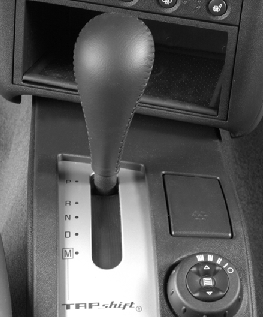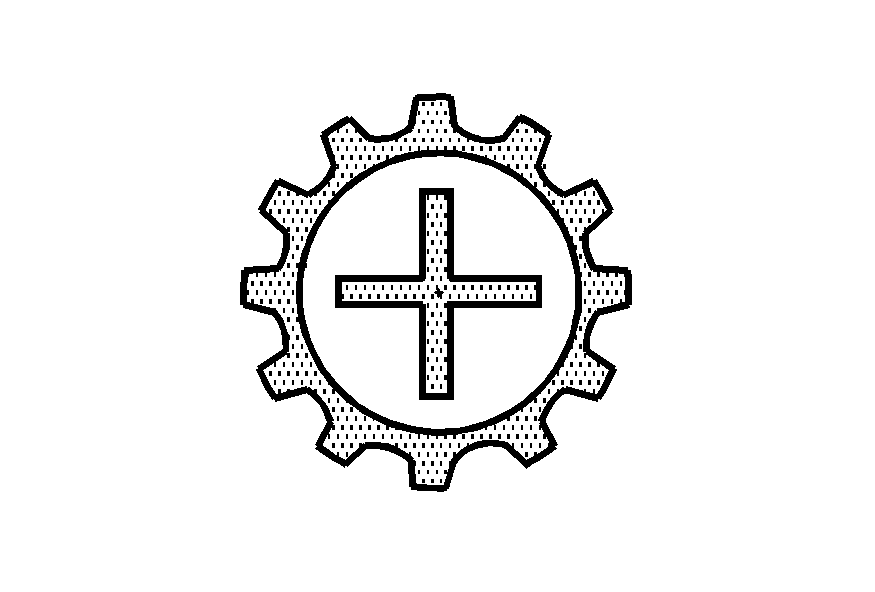
The shift lever for the automatic transaxle is located on the console between the seats.
Maximum engine speed is limited when the vehicle is in PARK (P) or NEUTRAL (N) to protect driveline components from improper operation.
There are several different positions for the shift lever.
PARK (P): This position locks the front wheels. It is the best position to use when the engine is started because the vehicle cannot move easily.Caution: It is dangerous to get out of the vehicle if the shift lever is not fully in P (Park) with the parking brake firmly set. The vehicle can roll.
Do not leave the vehicle when the engine is running unless you have to. If you have left the engine running, the vehicle can move suddenly. You or others could be injured. To be sure the vehicle will not move, even when you are on fairly level ground, always set the parking brake and move the shift lever to P (Park). See Shifting Into Park . If you are pulling a trailer, see Towing a Trailer .Make sure the shift lever is fully in PARK (P) before starting the engine. The vehicle has an automatic transaxle shift lock control system. The regular brakes must be fully applied and the shift control button, located on the front of the shift lever, must be pressed before the vehicle can be shifted from PARK (P) when the ignition is in RUN. If the vehicle cannot be shifted out of PARK (P), ease pressure on the shift lever by pushing it all the way into PARK (P) while keeping the brake pedal pushed down. Release the shift lever button. Then move the shift lever out of PARK (P), being sure to press the shift lever button. See Shifting Out of Park .
REVERSE (R): Use this gear to back up.Notice: Shifting to REVERSE (R) while your vehicle is moving forward could damage the transaxle. The repairs would not be covered by your warranty. Shift to REVERSE (R) only after your vehicle is stopped.
To rock the vehicle back and forth to get out of snow, ice or sand without damaging the transaxle, see If Your Vehicle is Stuck in Sand, Mud, Ice, or Snow .
NEUTRAL (N): In this position, the engine does not connect with the wheels. To restart when the vehicle is already moving, use NEUTRAL (N) only. Also, use NEUTRAL (N) when the vehicle is being towed.Caution: Shifting into a drive gear while the engine is running at high speed is dangerous. Unless your foot is firmly on the brake pedal, the vehicle could move very rapidly. You could lose control and hit people or objects. Do not shift into a drive gear while the engine is running at high speed.
Notice: Shifting out of PARK (P) or NEUTRAL (N) while the engine is running at high speed may damage the transaxle. The repairs would not be covered by your warranty. Be sure the engine is not running at high speeds when shifting your vehicle.
AUTOMATIC OVERDRIVE (D): This position is for normal driving. If the vehicle needs more power for passing, and it is:| • | Going less than 35 mph (55 km/h), push the accelerator pedal about halfway down. |
| • | Going about 35 mph (55 km/h) or more, push the accelerator pedal all the way down. |
The vehicle will shift down to the next gear and have more power.
Notice: If your vehicle seems to start up rather slowly or not shift gears when you go faster, and you continue to drive your vehicle that way, you could damage the transaxle. Have your vehicle serviced right away. You can drive in SECOND (2) when you are driving less than 35 mph (55 km/h) and AUTOMATIC OVERDRIVE Overdrive for higher speeds until then.
THIRD (3): This position is also used for normal driving, but it offers more power and lower fuel economy than AUTOMATIC OVERDRIVE (D).Here are some times THIRD (3) could be used instead of AUTOMATIC OVERDRIVE (D):
| • | When driving on hilly, winding roads. |
| • | When towing a trailer, so there is less shifting between gears. |
| • | When going down a steep hill. |
| • | When driving in non-highway scenarios (i.e. city streets, etc.). |
Notice: Driving in SECOND (2) for more than 25 miles (40 km) or at speeds over 55 mph (90 km/h) may damage the transaxle. Also, shifting into SECOND (2) at speeds above 65 mph (105 km/h) can cause damage. Drive in THIRD (3) or AUTOMATIC OVERDRIVE Overdrive instead of SECOND (2).
FIRST (1): This position gives the vehicle even more power but lower fuel economy than SECOND (2). It can be used on very steep hills, or in deep snow or mud. If the shift lever is moved to FIRST (1), the transaxle will not shift into first gear until the vehicle is going slowly enough.Notice: Spinning the tires or holding the vehicle in one place on a hill using only the accelerator pedal may damage the transaxle. If you are stuck, do not spin the tires. When stopping on a hill, use the brakes, or parking brake to hold the vehicle in place.
Performance Shifting with TAP-Shift™

If the vehicle is equipped with the 3800 V6 Supercharged engine, it may have a console gearshift with a MANUAL (M) position.
The other gearshift positions available are PARK (P), REVERSE (R), NEUTRAL (N) and AUTOMATIC OVERDRIVE (D), and operate as explained earlier in this section.
While in the MANUAL (M) position, the paddles, located on the steering wheel, can be used to up-shift or down-shift the transaxle, under certain circumstances.

While in the MANUAL (M) mode, push either paddle once to up-shift to the next gear. Pull either paddle once to down-shift to the next gear.
To fully use the system, select MANUAL (M) while stopped, with the engine running. The vehicle will begin moving in first gear upon acceleration. For better control In icy or slippery conditions, the vehicle may start out in second gear, rather than first gear.

The up-shift indicator light on the instrument panel, or the up-shift symbol on the Head-Up Display (HUD), if equipped, is given as a prompt to use the TAP-Shift ™ paddle.
These prompts to up-shift as needed, will be given throughout acceleration. If up-shifting does not occur when prompted, the vehicle speed will be limited to protect the engine.
Press the accelerator quickly while driving in the highest gear to make the transaxle automatically down-shift. The transaxle will also automatically down-shift as the vehicle decelerates and comes to a stop.
When a paddle is pushed or pulled a chime will sound when the vehicle cannot respond to a transaxle gear change. The system will not allow either an up-shift or a down-shift if the vehicle speed is too fast or too slow, nor will it allow a start from third or higher gear.
The MANUAL (M) gear can also be selected while the vehicle is already moving. The current transaxle position will continue to be displayed on the Driver Information Center (DIC) and HUD, if equipped. The transaxle up-shifts and down-shifts can be done using the TAP-Shift ™ paddles as described previously.
